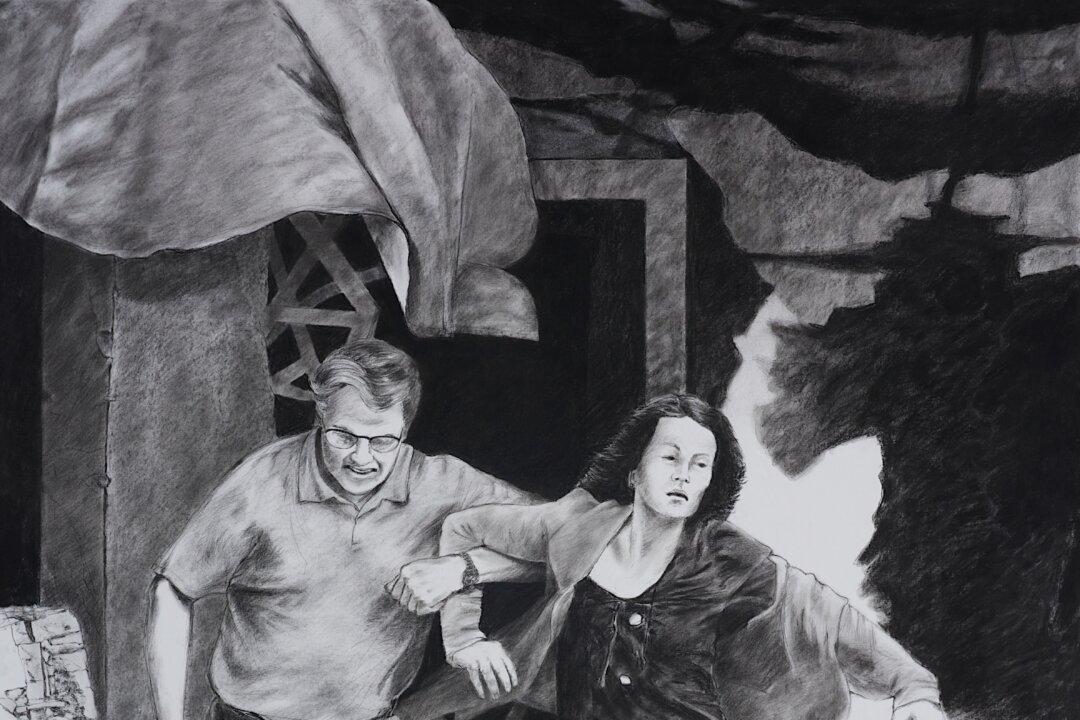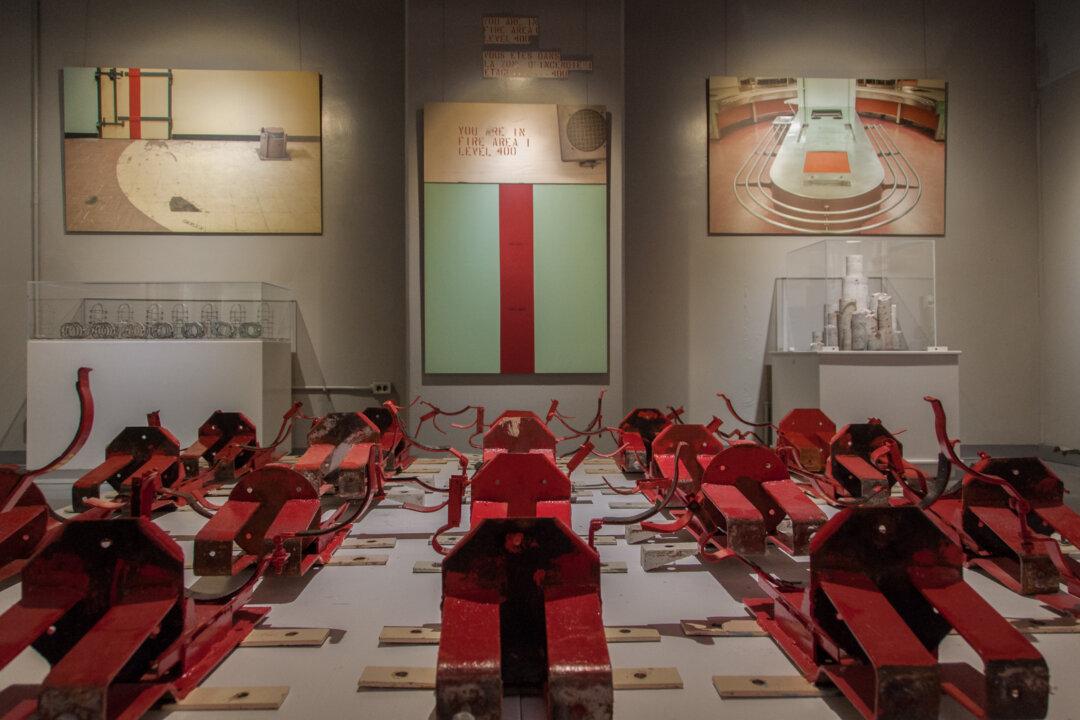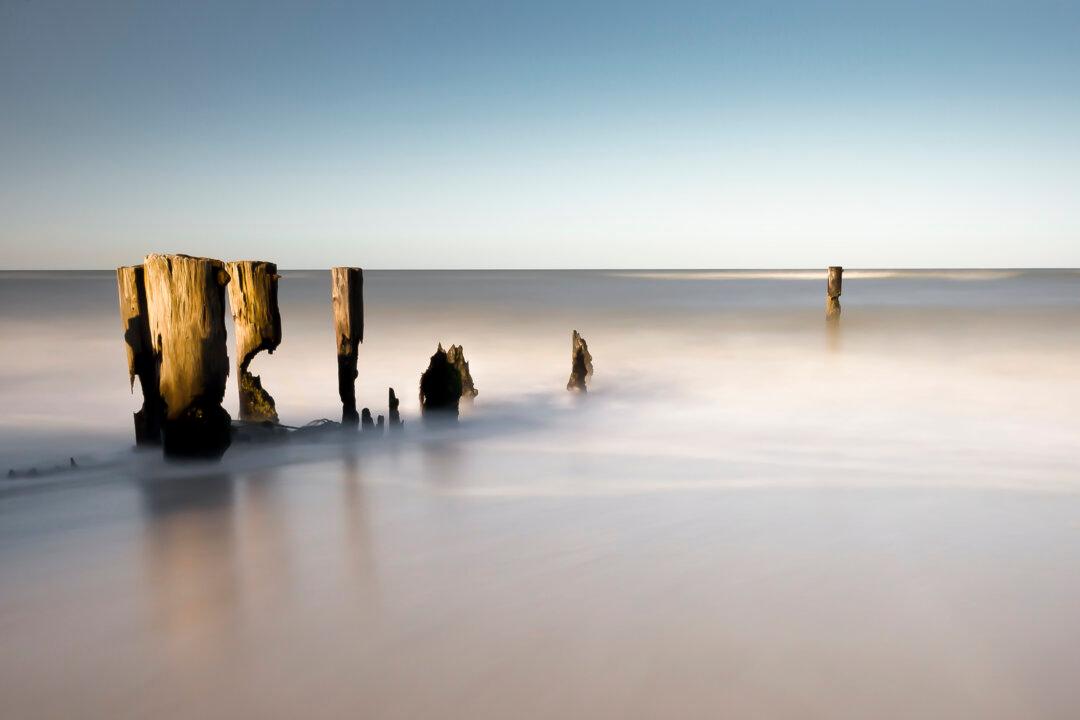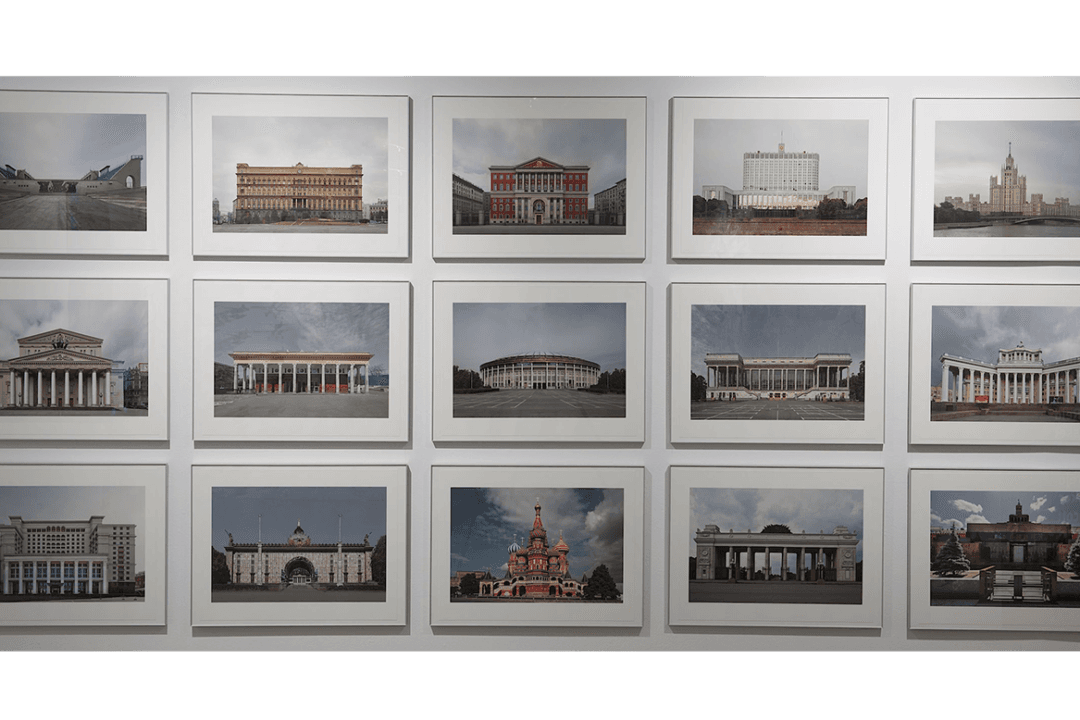What tales do we tell of war? Stories of sound and fury, moments of silence, scrubbed memorials. Two art exhibitions currently showing in Ottawa ask deeper questions.
“Hard Street,” Norman Takeuchi’s series of black-and-white drawings at the Ottawa School of Art, is a narrative of individual acts of mayhem, the detritus of contemporary urban terrorism.
“War Beaches: Contemporary Views of the Normandy Coast,” Richard Robesco’s 2014 series of photographs at Exposure Gallery, tells a different tale. The photographs are all of beaches swept clean by the sea.
‘Hard Street’
In “Hard Street,” Takeuchi’s 17 drawings tell a tale of contemporary terrorism, physically and symbolically, in a clockwise sequence of imagery. The imagery was drawn from the artist’s troubled study of daily news reportage from 2014-2015.
The first 11 drawings are paired panels, diptychs of action and effect. The action on the left is usually that of a single figure—lithe, athletic, male. On the right we see its aftermath—destruction. In “Hurler No. 1” for example, a young man wearing a gas mask has just jumped out of a car. He holds a furled flag in one hand. With the other, he throws something as hard as he can. We do not know his target. On the right is a black hole. Something exploded here.
The figure in “Hurler No. 4” is somewhat older. His stance is clumsy. That object in his hand may be a grenade, or just another stone. On the right, a large bone is visible in the debris. It appears to be the hip socket of a very large animal. A fetal shape appears within.
As the series moves from left to right around the room, its imagery becomes more layered, more evocative. The figure seen in the left panel of “Banner Bearer” carries a flag with an incomprehensible text. Beside it, on the right, someone’s shadow is visible amid the rubble of shattered concrete and broken rebar.
Midway through “Hard Street,” imagery referencing the global petroleum industry appears in five different compositions. The right panel of “Wind-Up” is a scene of expensive cars, all destroyed. Were they fire-bombed? Booby-trapped? In other panels we see tires burning, and pipelines exploded amidst piles of urban rubble.
The two panels of the 12th diptych bring the narrative closer to home. All of the earlier compositions of action-and-effect were scenes we saw at a “safe distance.” The scale of “No Easy Out,” however, shifts viewer perspective. A man with a truncheon in one hand pulls upon the shirt of another who is trying to flee. On the right, a building has collapsed. In its piles of rubble are borderlines, and geographies.
The next four compositions in the series are large, single-panel scenes. Their imagery is familiar. In “Fleeing Couple,” a man and a woman are running as fast as they can, straight toward us. The man is still holding onto his briefcase. They look like everyone’s neighbours. Behind them is a figure with a club. In the foreground, someone’s hand is texting a message. Is an explosion imminent?
The last drawing of the series, “Spin Cycle,” is of the same young man with the gas mask we first saw in “Hurler No. 1,” the drawing that opened the series. “Hard Street” has come full circle. Now the young man is facing us. Do we deserve this?
‘War Beaches’
By contrast, Richard Robesco’s photographs prompt us to ask what it is we remember, and why.
The shorelines Robesco photographed in 2014 were all those of the Second World War D-Day landings 70 years ago. What reason have we to remember warfare long past? The ocean’s tides sweep carnage away so reliably. Beyond the ocean’s edge, we see a calm sea stretching out to the horizon line. A few clouds drift by. There is nothing more to be seen. There are no ships on the waters, no birds in the sky, no footprints in the sand in these photographs.
The photographer’s view of the shoreline through his camera’s lens is disciplined, thoughtful. In each photograph, the horizon line bisects the print. “War Beaches No.1, Trouville-sur-Mer,” is an excellent example of Robesco’s taut, formal compositions.
Robesco’s series shows us why we forget so easily. We have not yet blown ourselves to smithereens. Takeuchi’s “Hard Street,” on the other hand, makes plain both the provocations of war and the ways wars are fought at the outset.
In each series, the artist’s work prompts us to look again, and ask harder questions. The whole truth is not told in doctrines of just wars, nor in anyone’s historical descriptions.
“Hard Street” is on display Jan. 11-Feb. 14 at the Ottawa School of Art, 35 George Street. “War Beaches” is on display Jan. 13-Feb. 17 at Exposure Gallery, 1255 Wellington Street West.
Maureen Korp, PhD, is an independent scholar, curator, and writer who lives in Ottawa. Author of many publications, she has lectured in Asia, Europe, and North America on the histories of art and religions. Email: [email protected]





